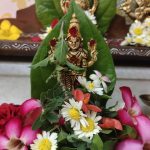In Hindu mythology, the enchanting beings known as Gandharvas and Apsaras hold a significant place. These celestial creatures possess beauty, grace, and an otherworldly charm that has captivated the hearts and minds of people for centuries. Let us delve into the mesmerizing origins of the Gandharvas and their ethereal counterparts, the Apsaras.
The Origins of the Gandharvas
According to the Rigveda, the oldest sacred text of Hindu mythology, the Gandharvas were born from the breath of Prajapati, the lord of creation. They are considered the offspring of the divine creator, along with the Apsaras, the beautiful celestial nymphs. The Gandharvas hold a significant place in the celestial hierarchy, being positioned between the gods and humans.
Apsaras: The Enchanting Nymphs of Paradise
Apsaras, or celestial nymphs, are bewitching and graceful beings in Hindu mythology. They are often described as beautiful and youthful dancers, captivating the hearts of gods and mortals alike. Renowned for their alluring charm and mesmerizing dance forms, the Apsaras have become symbols of beauty and elegance in Indian art and literature.
The Divine Union of Gandharvas and Apsaras
The Gandharvas and Apsaras are intertwined in mythology, as they often accompany each other in the celestial realms. According to Hindu legends, the Gandharvas are the husbands of the Apsaras, sharing a divine connection of love and companionship.
The Gandharvas and Apsaras in Hindu Art and Literature
The mesmerizing beauty and elegance of the Gandharvas and Apsaras have inspired countless artists and poets throughout history. Indian sculptures, paintings, and dance forms frequently depict these celestial beings, immortalizing their captivating presence.
The origin of Gandharvas and beautiful Apsaras lies within the rich tapestry of Hindu mythology. Their celestial allure, captivating music, and enchanting dance forms have captivated the imagination of individuals for centuries.
The ethereal nature of the Gandharvas and Apsaras continues to inspire art, literature, and ongoing fascination with the mystical realms of Indian mythology.
Feature Image Credit: Pinterest.




